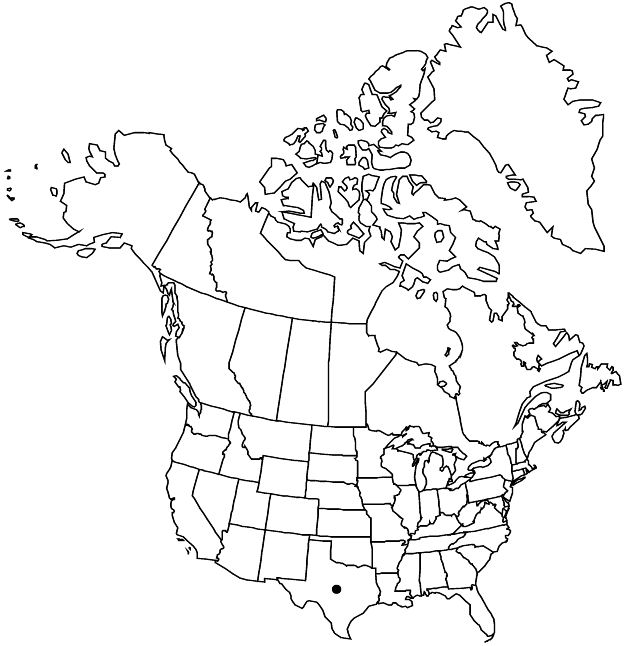Difference between revisions of "Phyllanthus ericoides"
Rep. U.S. Mex. Bound. 2(1): 193. 1859.
FNA>Volume Importer |
FNA>Volume Importer |
Revision as of 18:18, 24 September 2019
Shrubs, monoecious, 0.5–2 dm; branching not phyllanthoid. Stems terete, not winged, glabrous. Leaves persistent, spiral, all well developed; stipules auriculate, pink with narrow white margins; blade narrowly oblanceolate, 1.5–3.5(–5) × 0.7–1.5 mm, base obtuse to rounded, apex pungent, both surfaces glabrous. Inflorescences solitary flowers, staminate proximal, pistillate distal. Pedicels: staminate 0.6–0.8 mm, pistillate spreading in fruit, 0.9–1.2 mm. Staminate flowers: sepals 6, pale brownish green, flat, 0.9–1.2 mm; nectary extrastaminal, 6 glands; stamens 3, filaments connate throughout. Pistillate flowers: sepals 6, pale brownish green, flat, 1.1–1.4 mm, obscurely veined; nectary annular, 6-lobed. Capsules 2 mm diam., smooth. Seeds uniformly brown, 0.9–1 mm, verrucose.
Phenology: Flowering and fruiting year-round, following rains.
Habitat: Desert scrublands on limestone rocks.
Elevation: 600–700 m.
Distribution

Tex., Mexico (Chihuahua, Coahuila).
Discussion
Phyllanthus ericoides is known from only a few populations in Brewster and Terrell counties, Texas, and nearby Chihuahua and Coahuila, Mexico. Although stunted plants of the related P. polygonoides may resemble P. ericoides, the latter may be distinguished by its woody habit, pungent leaves, shorter pedicels, completely connate filaments, and smaller seeds. In addition, the woody base of P. ericoides is reported to smell like coffee with chicory (M. C. Johnston and B. H. Warnock 1963).
Selected References
None.